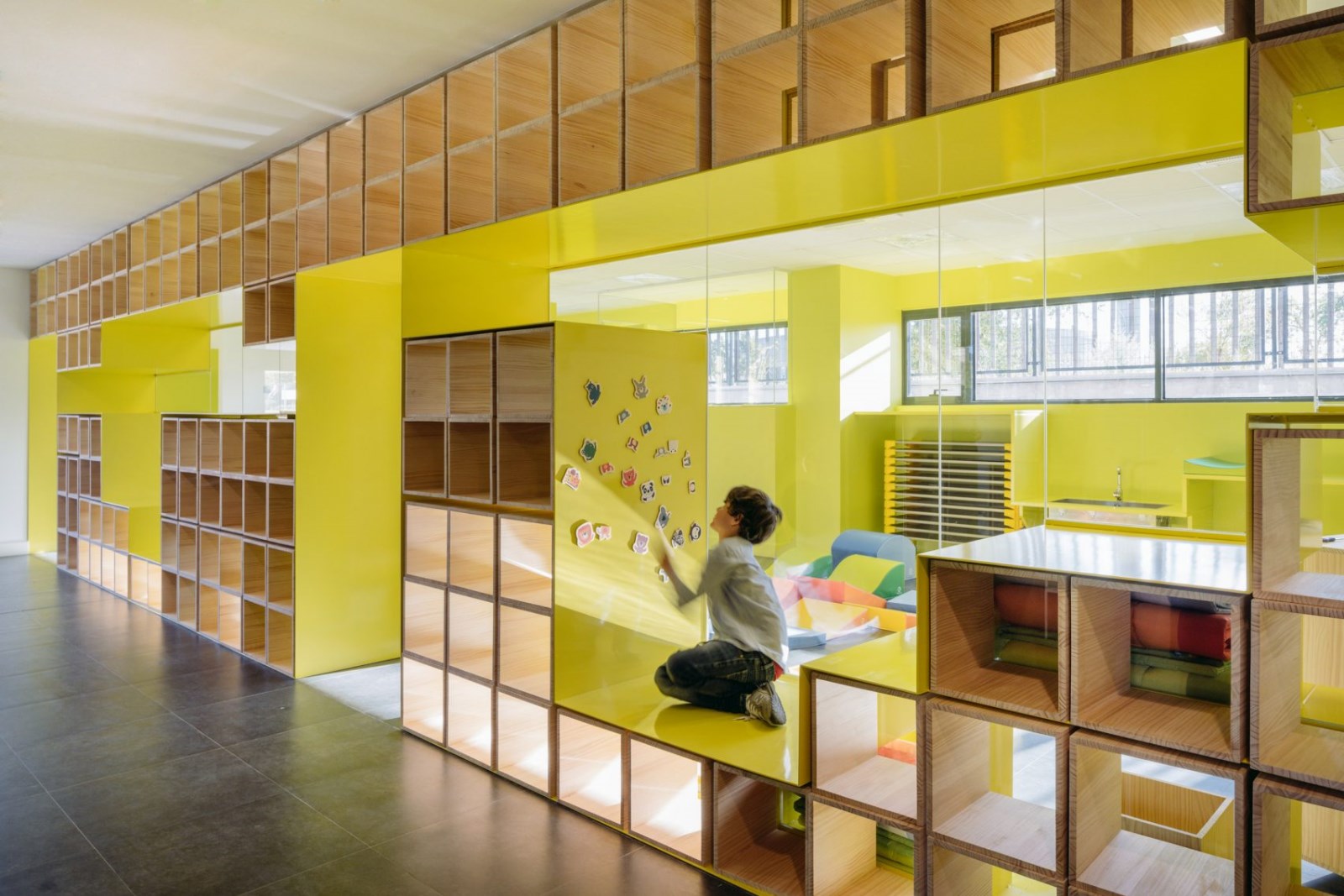Cotton Gin at the Co
2017-03-21 13:00
架构师提供的文本描述。胡图族棉花和谷物合作社从1937年起一直主要服务于德克萨斯州胡图的农业社区,直到2003年关闭。除了原来的24个筒仓外,放置棉花杜松子机和打包机的建筑物形成了一个熟悉的地标和天际线,这是胡图族繁华商业区的西边。最具代表性的是南方的大部分原始杜松子酒建筑,它们是法利街的终点站和焦点。胡图市在2003年购买了合作社的土地,并进行了一系列的总体规划演习,指导和指导16英亩的合作社遗址和邻近历史悠久的胡图市中心的重建工作。合作社的总体规划提出了一个新的市政厅、公民公园和一个公共活动空间,周围是私人投资的零售、办公和住宅发展项目。
Text description provided by the architects. The Hutto Cotton and Grain Co-op served the once primarily farming community of Hutto, Texas from 1937 until it’s closure in 2003. Along with the original 24 silos, the structures that housed the cotton gin and baling machinery formed a familiar landmark and skyline, which was the western edge of Hutto’s modest downtown. Particularly iconic was the Southern-most of the (2) original gin buildings, which stood as the terminus and focal point for Farley Street. The City of Hutto purchased the Co-op site in 2003 and conducted a series of Master Planning exercises to direct and guide redevelopment of both the 16-acre Co-op site, and adjacent Historic Downtown Hutto. The Co-op master plan proposes a new City Hall, Civic Park and a public events space, surrounded by privately funded retail, office and residential development.
设计目标是为公共和私人提供多用途、灵活的露天活动空间,以补充和支持现有图书馆以及未来毗邻的市政公园和市政厅的规划功能。这座建筑需要开放,供车辆作为农贸市场和工匠集市使用。但也有足够的亲切感来接待婚礼。
The design objectives were to create a multi-purpose, flexible, open-air events space for both public and private use, that would complement and support the programmatic functions for the existing Library, as well as future adjacent Civic Park and City Hall. The building needed to be open and accessible for vehicles for use as a farmer’s market and artisan fairs, but also intimate enough to accommodate wedding receptions.
伦敦金融城希望重新使用现有的杜松子酒结构,因为它们对一代又一代的市民来说具有标志性和地标性的地位,希望保持与农业历史的视觉联系,纽约市还希望利用该项目作为催化剂,吸引交通和注意力,以此作为启动场地和吸引公共/私人发展伙伴的一种手段。
The City desired to re-use the existing gin structures because of their iconic and landmark status to generations of citizens, a desire to maintain a visual connection to their agricultural past, as well as their modest project budget and sustainability objectives. The City also wanted to use the project as a catalyst to draw traffic and attention as a means to activate the site and attract a public/private development partner.
Before. Image Courtesy of Antenora Architects
Before. Image Courtesy of Antenora Architects
(2)原始的棉花杜松子酒建筑被有选择地拆解,其中的部分被集体回收/再利用,形成一个单一的露天公共活动空间。未用于该项目的建筑物的部件,如额外的屋顶和遮阳桁架,已被仔细清点,并存放在未来的市政厅使用。
The (2) original cotton gin buildings were selectively deconstructed, and portions thereof were collectively recycled/re-used to make a single open-air public events space. Components of the buildings that were not re-used for this project, such as additional roof and awning trusses, have been carefully inventoried and stored for use on the future City Hall.
Before. Image Courtesy of Antenora Architects
设计的目的是为了突出南杜松子酒大楼的标志性外观,并进一步巩固其作为法利街终点站标志性建筑的地位。穿孔不锈钢被选为南立面的外部壁板材料,因为它具有引人注目的能力,能够在白天反射不断变化的南方太阳,并在夜间保持透明度。穿孔的钢和宽阔的悬垂也有助于填补空间的扩散自然日光。
The design intent was to accentuate the iconic appearance of the remaining South gin building and further reinforce its place as a focal landmark at the Farley Street Terminus. Perforated stainless steel was chosen as the exterior siding material for the south façade for it’s eye-catching ability to reflect the ever-changing southern sun during the day, and for it's transparency at night. The perforated steel and broad overhangs also serve to help fill the space with diffused natural daylight.
一个重大的设计挑战是对现有铆接钢结构进行加固,使其符合现行建筑规范,并在不失去原始钢细节的精致和优雅的情况下,重新创建一些丢失或损坏的构件。因此,对加劲肋、X支撑和附加支撑的布置和尺寸给予了仔细的关注。以及设计新作品,制作类似或取代原作。
A significant design challenge was to reinforce the existing riveted steel structure to meet current building codes, and to recreate some missing or damaged components, without losing the delicacy and elegance of the original steel details. As such, careful attention was paid to the placement and size of stiffeners, X-braces and additional supports, as well as to the design of new work fabricated to resemble or replace the original.
产品描述:钢是合作区内棉绞车的主要原料和优势材料,使用了多种不同类型的钢产品。一级结构由铆接钢桁架和钢角柱组成。原结构框架不符合现行建筑规范,采用钢管和钢角加固。
Product Description. Steel is the primary and predominant material used for the Cotton Gin at the Co-op District. A number of different types of steel products were used. The primary structure is comprised of riveted steel trusses and columns made from steel angles. The original structural frame, which did not meet current building codes, was reinforced with steel tubes and steel angles.
该皮肤是一个穿孔不锈钢面板和车间油漆钢实心板的组合。所有的面板都是滚动的,以匹配原始壁板材料的轮廓和图案。钢板系在柱子之间的钢制角度上。
The skin is a combination of perforated stainless steel panels and shop painted steel solid panels. All of the panels were rolled to match the profile and pattern of the original siding materials. The steel panels were fastened to steel angles, which span between the columns.
Architects Antenora Architects
Location Hutto, TX 78634, United States
Designer Michael Antenora
Project Manager Gordon Bingaman
Photographs Brian Mihealsick
 举报
举报
别默默的看了,快登录帮我评论一下吧!:)
注册
登录
更多评论
相关文章
-

描边风设计中,最容易犯的8种问题分析
2018年走过了四分之一,LOGO设计趋势也清晰了LOGO设计
-

描边风设计中,最容易犯的8种问题分析
2018年走过了四分之一,LOGO设计趋势也清晰了LOGO设计
-

描边风设计中,最容易犯的8种问题分析
2018年走过了四分之一,LOGO设计趋势也清晰了LOGO设计





.jpg)

.jpg)

.jpg)



.jpg)


.jpg)






.jpg)

.jpg)

.jpg)


.jpg)




.jpg)

.jpg)

.jpg)

.jpg)


.jpg)







































